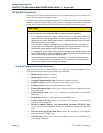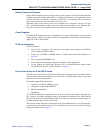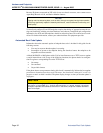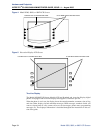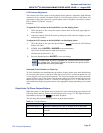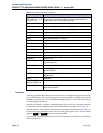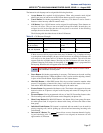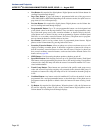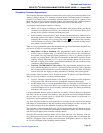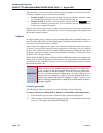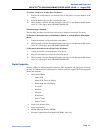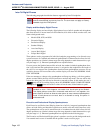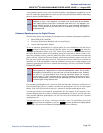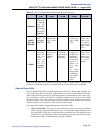
Hardware and Endpoints
INTER-TEL
®
CS-5200/5400 ADMINISTRATOR GUIDE, ISSUE 1.1 – August 2005
Page 98 Keymaps
• Next Button: Not required for digital phones. Digital phones use the Volume button for
scrolling forward through displays.
• Page Zone Button: A page zone button is programmed with one of the page access
codes (9600–9609 or 9600–9649 depending on the software version) for quick access to
page zones (0–9 or 0–49 respectively).
• Previous Button: Not required for digital phones. Digital phones use the Volume but-
ton for scrolling backward through displays.
• Programmable Button: Up to 35 user-programmable buttons can be designated and
given default values in the keymap database. They can then be reprogrammed to enter
any of the trunk group access codes, extension numbers, or feature codes by the indi-
vidual phone users as desired. Or, they can be programmed as System or Station Speed
Dial bins, or as secondary extension buttons (see below). The phone user or program-
mer can return the buttons to default values at any time.
• Save Button: Used for saving volume levels or programmed phone features. Digital
phones use the Volume button, by pressing both ends at once.
• Secondary Extension Button: Allows an phone user to have one-button access to calls
ringing or holding at another phone. It should be assigned to a button with a lamp so
that the secondary extension button can show the call status. If desired, a phone can
have several secondary extension buttons, each associated with a different station. For
details, refer to page 168.
• SPKR Button: Used for turning the phone speaker or headset on and off.
• Speed Dial Buttons: Each keymap can have up to 10 Speed Dial buttons. Each Speed
Dial button can be programmed by the phone user to dial one digit string. If assigned to
a button with a lamp, the lamp will show the status of an extension number if it is asso-
ciated with that button.
• Trunk Group Button: These buttons are associated with specific trunk group access
codes and are used for placing outgoing calls on trunks in the selected trunk group. If
assigned to a button with a lamp, the lamp will be lit if all trunks in the trunk group are
in use.
• Undefined Button: Any button can be left undefined if it will not be needed. It can be
programmed, like a user-programmable button, as described above. If the phone user or
programmer returns the phone to default values, the button will return to being “unde-
fined.”
• Up Button: Not required for digital phones. When the phone is idle, the Up button can
be used for adjusting volume, in place of the Volume button. Digital phones use the
Volume button for scrolling forward through displays.



